
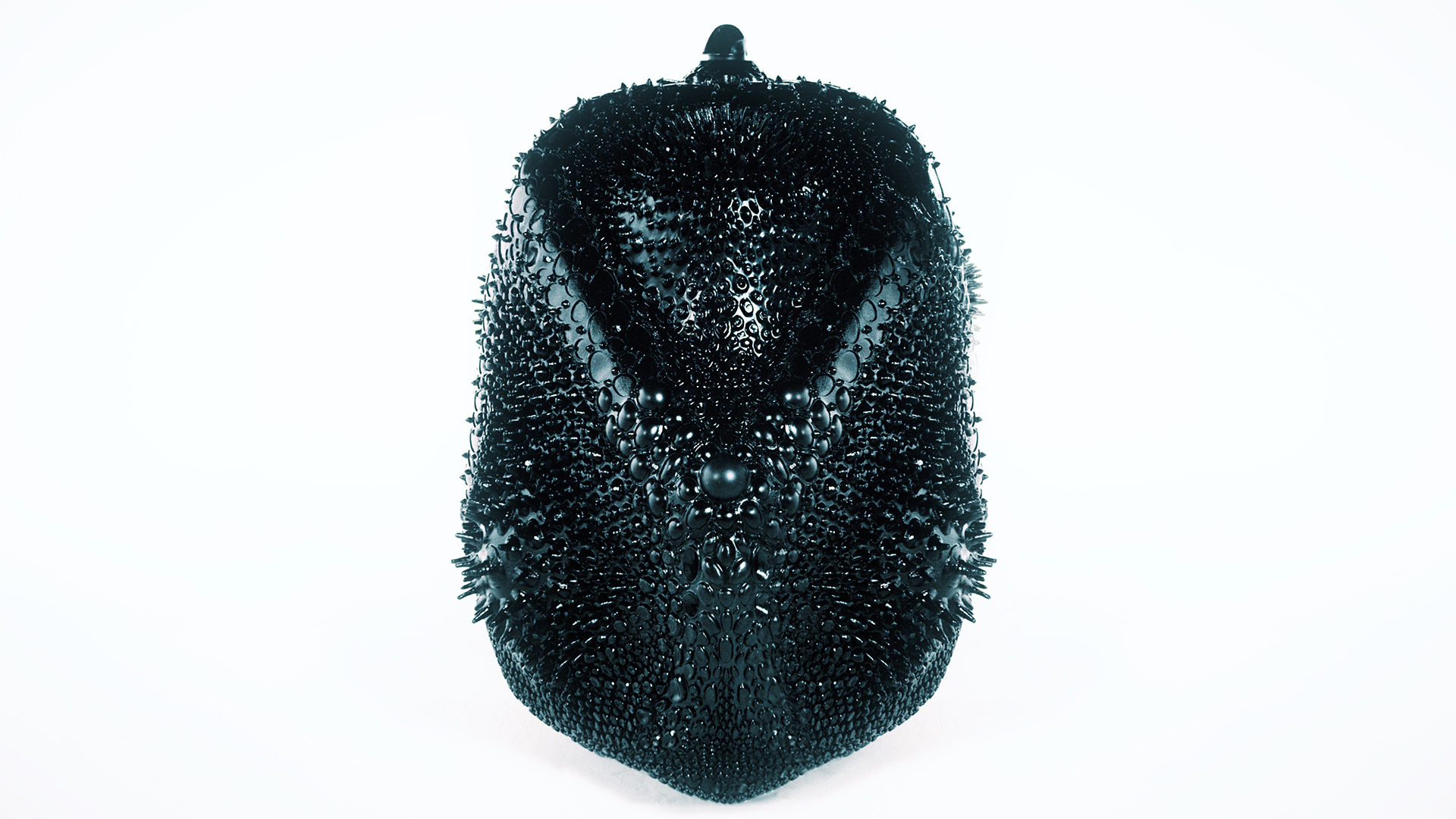
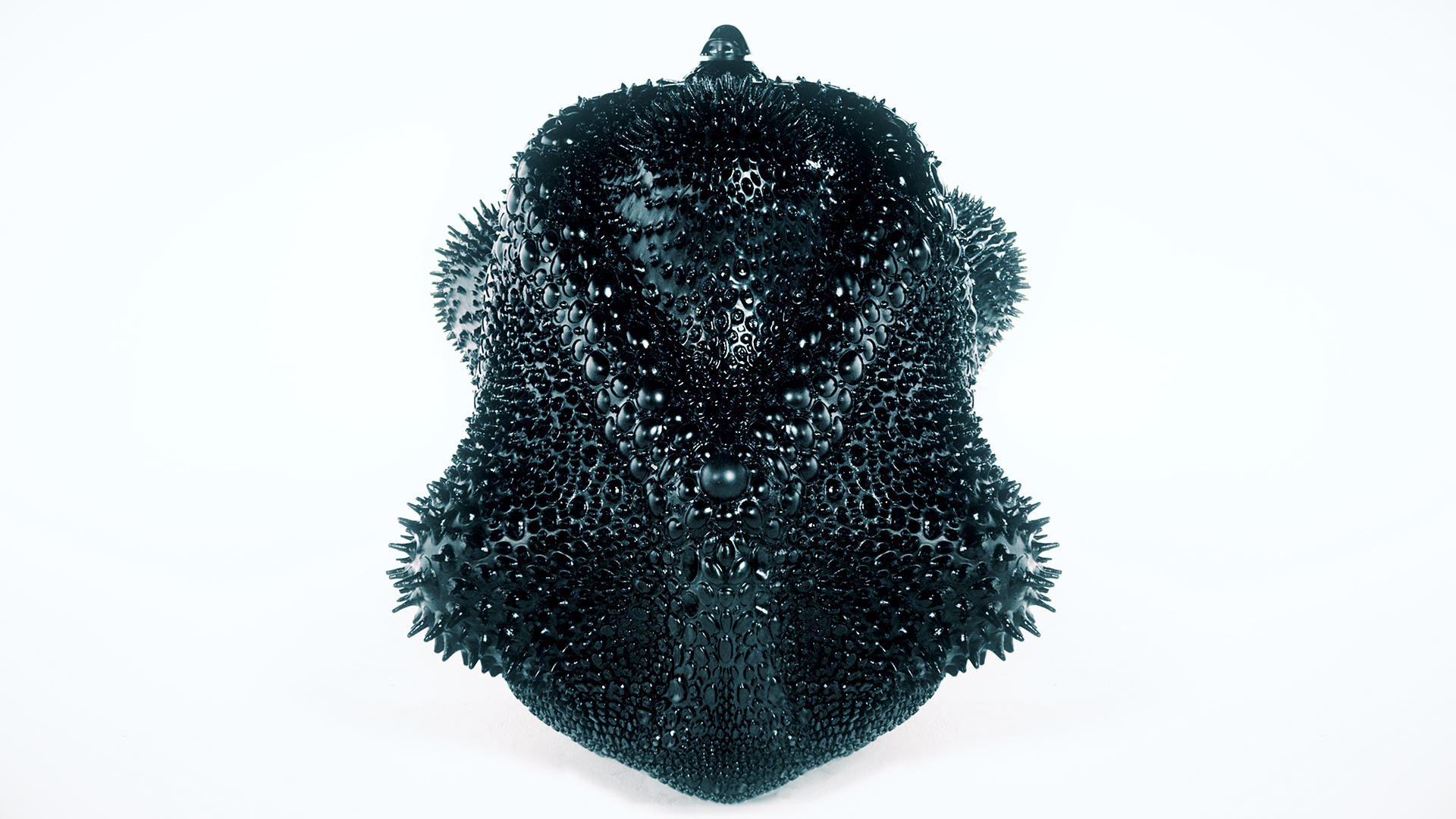

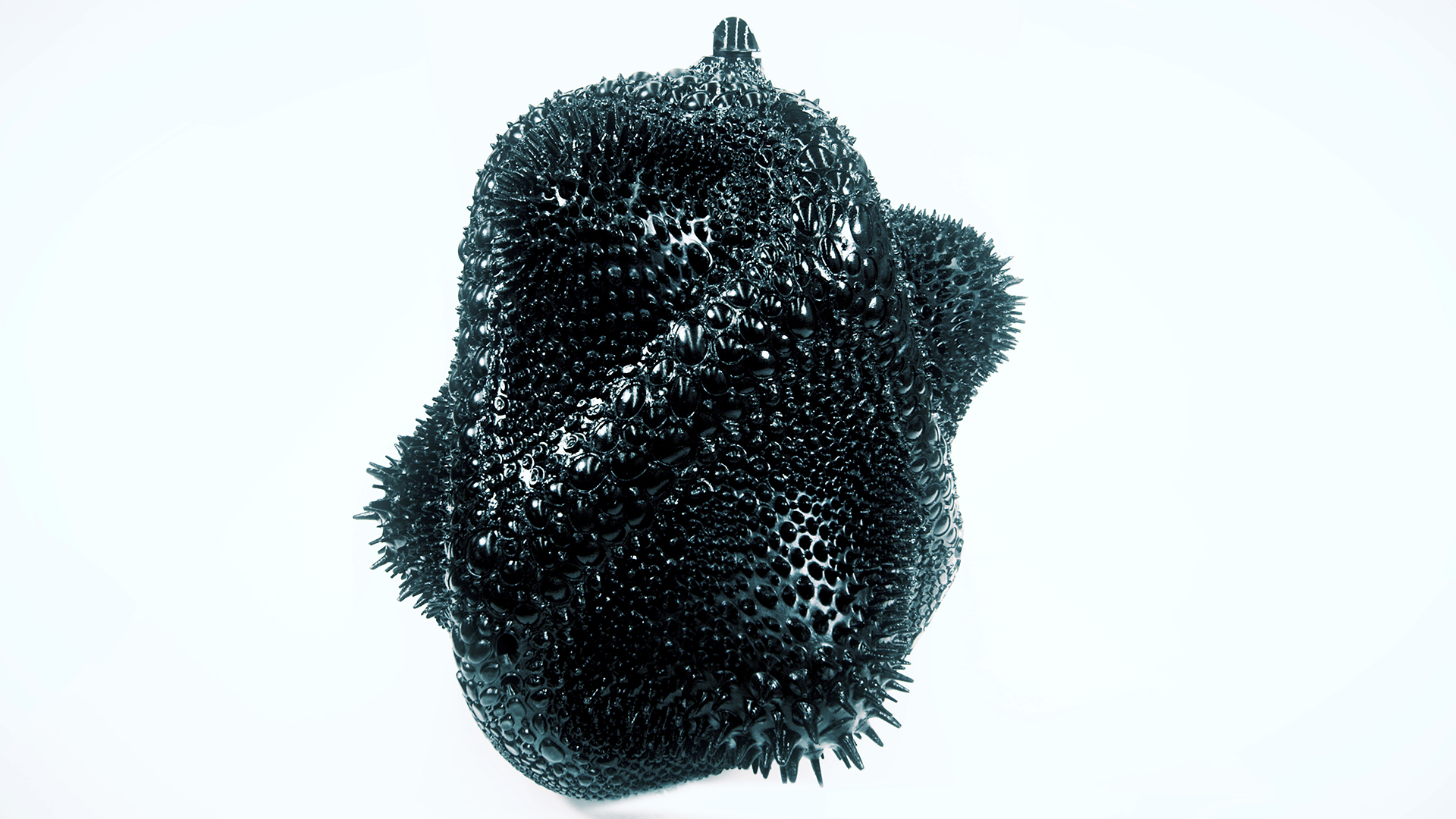
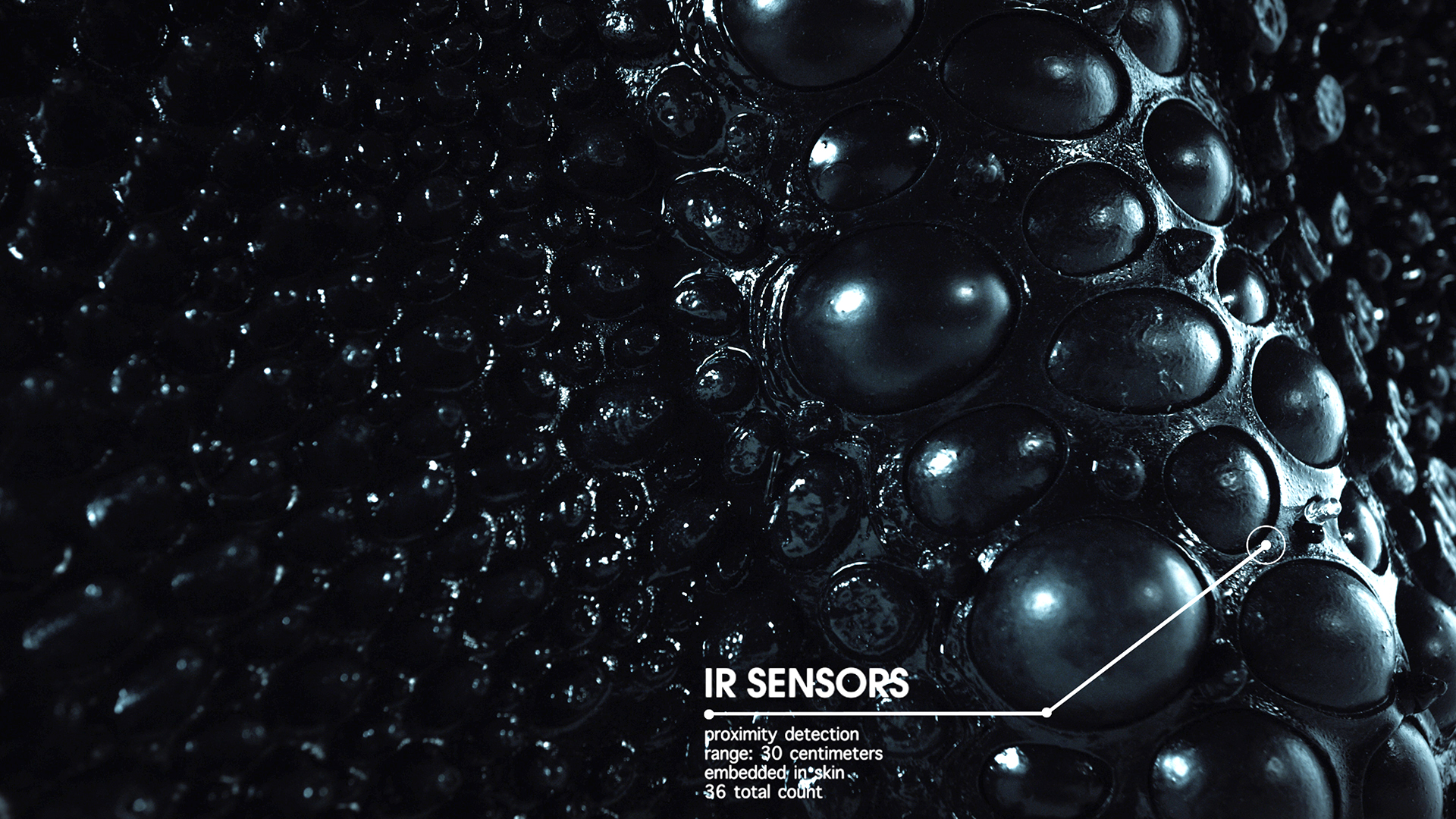
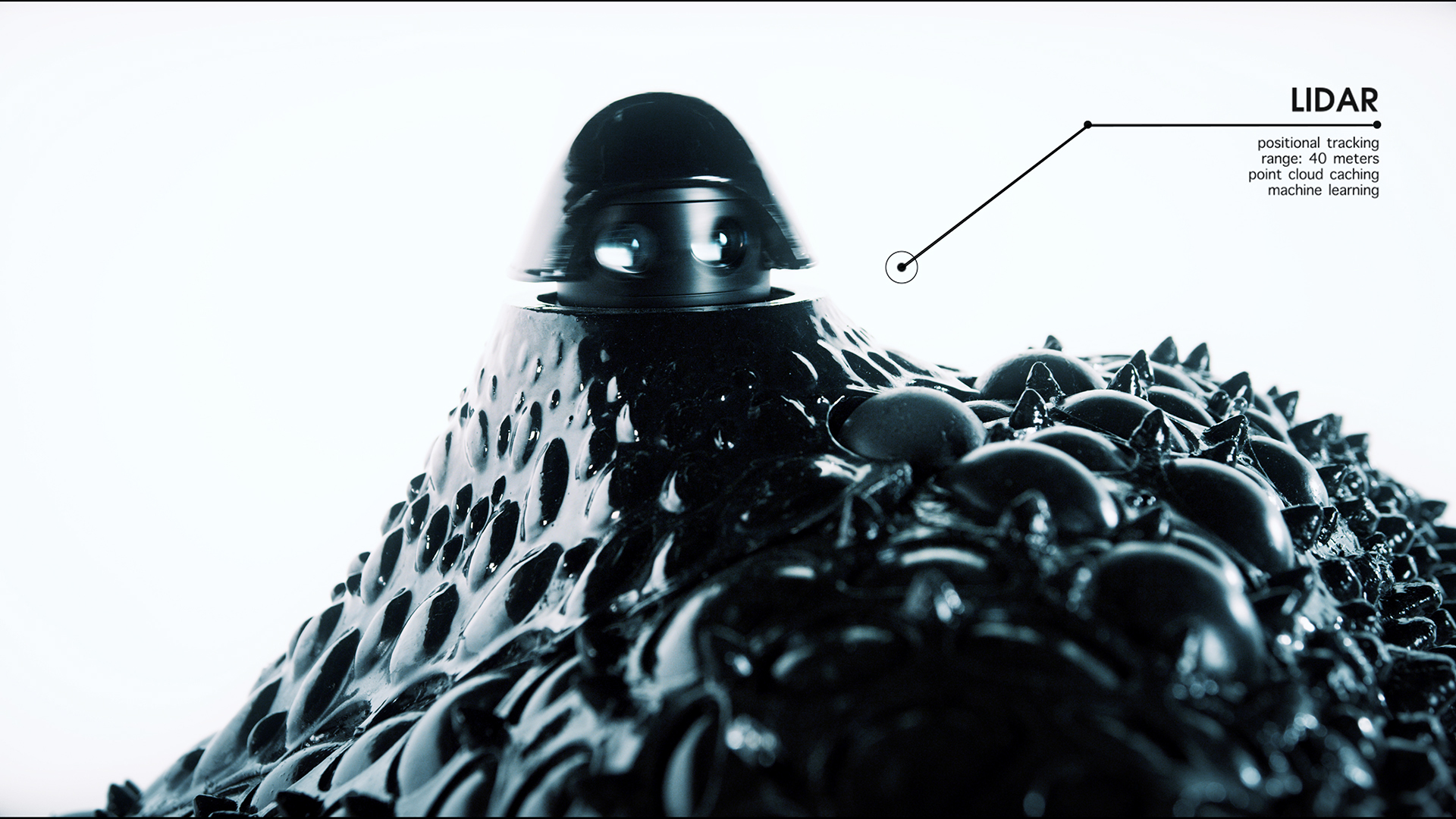
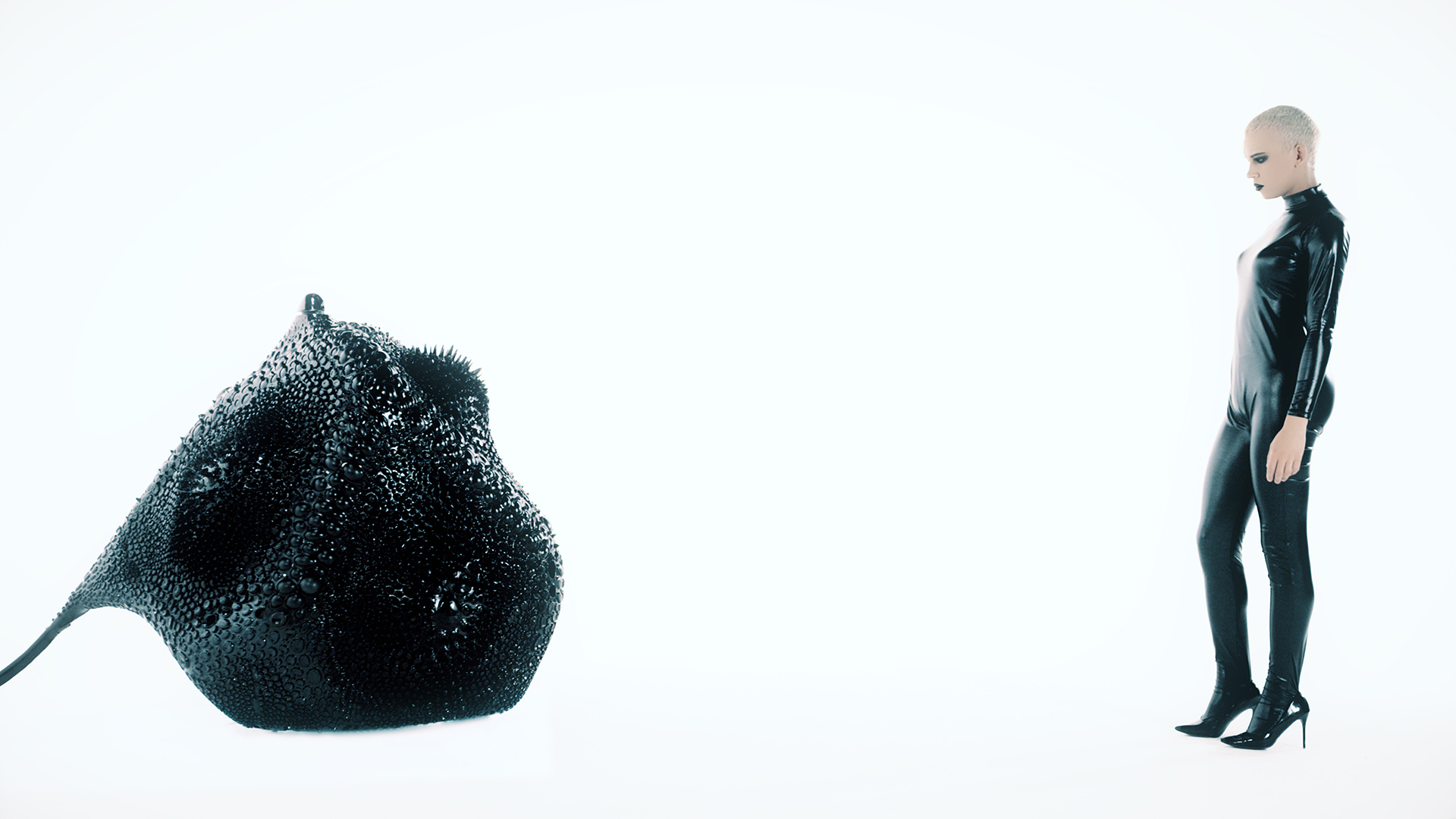
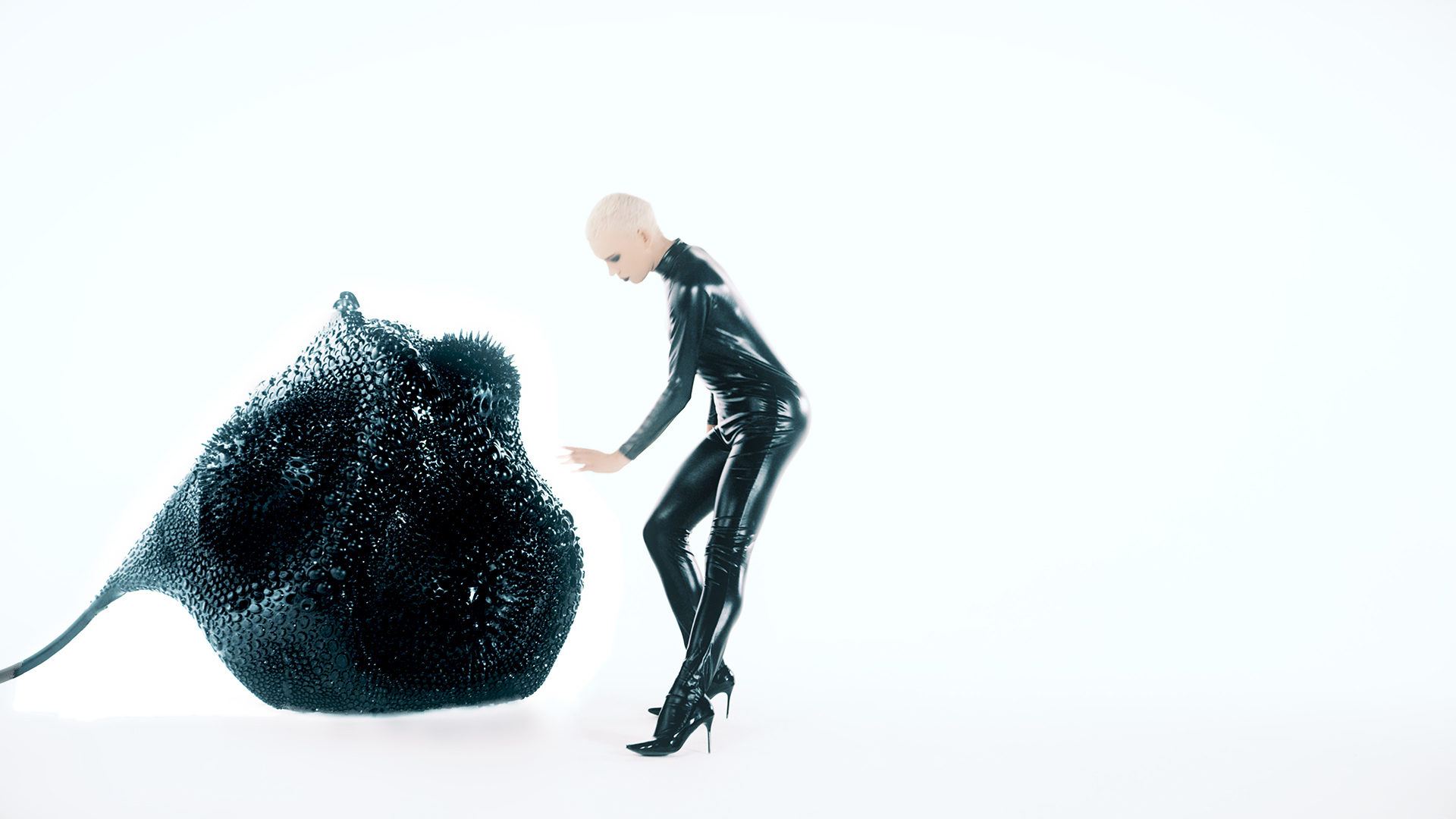
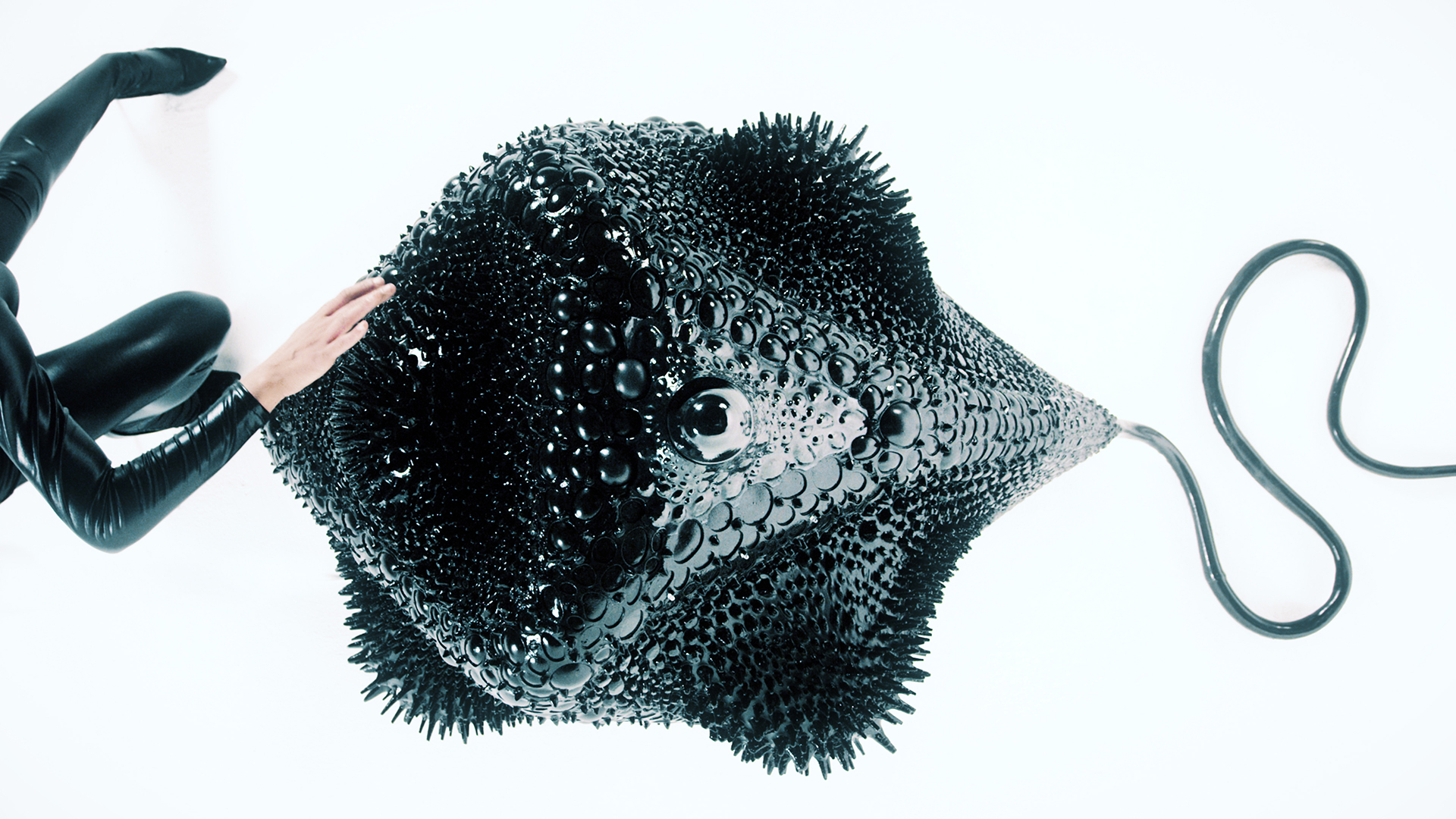
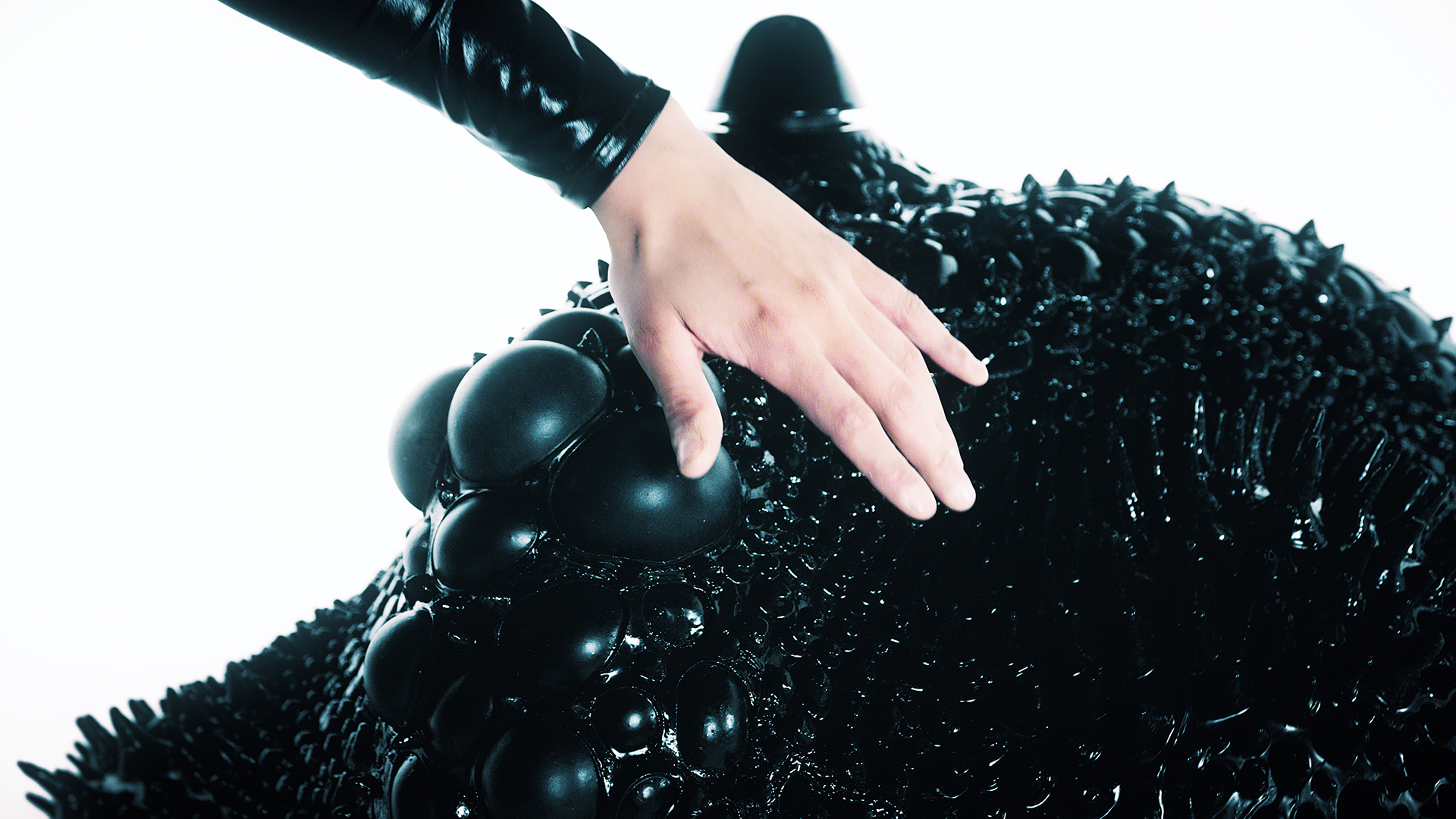
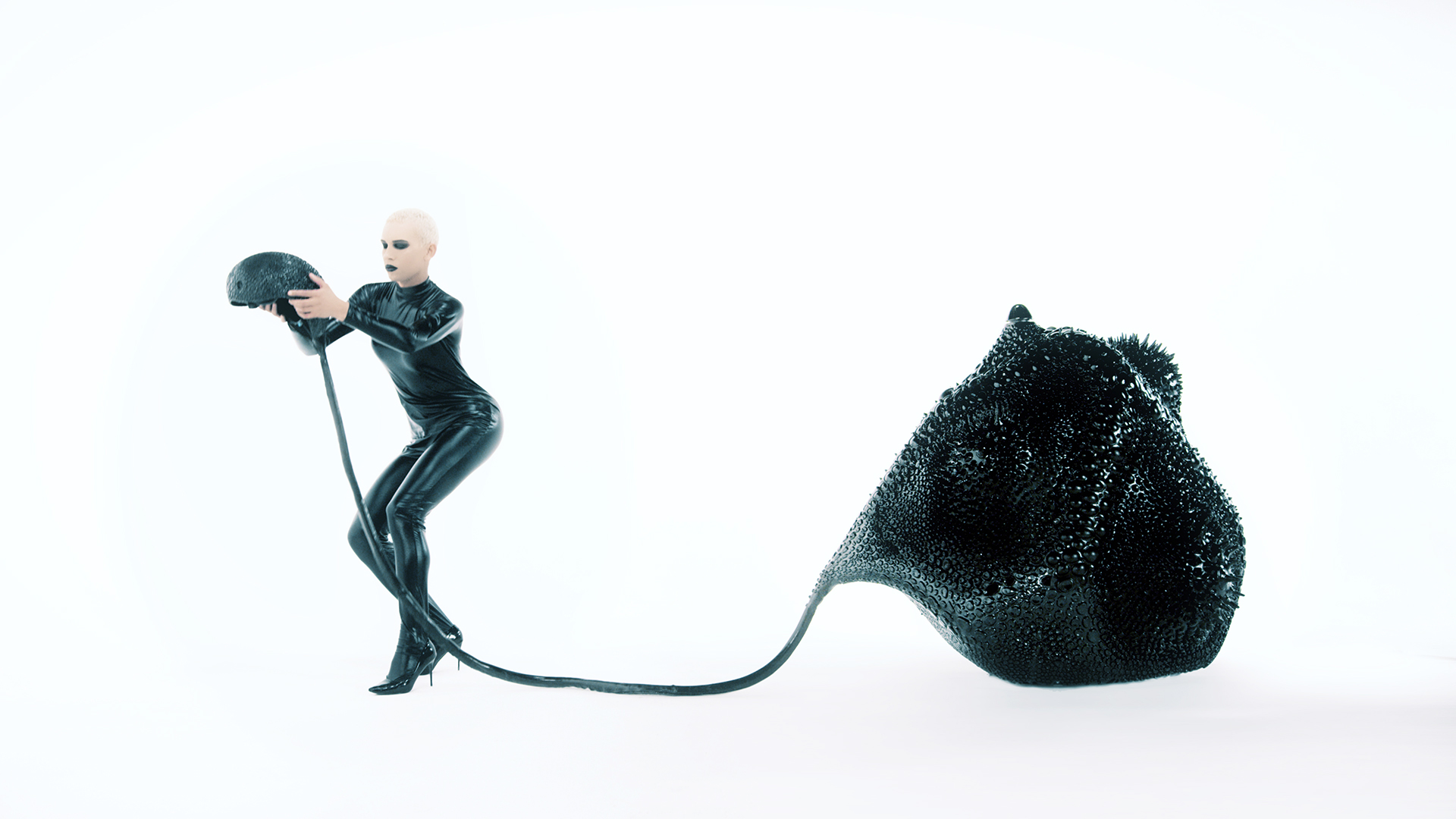
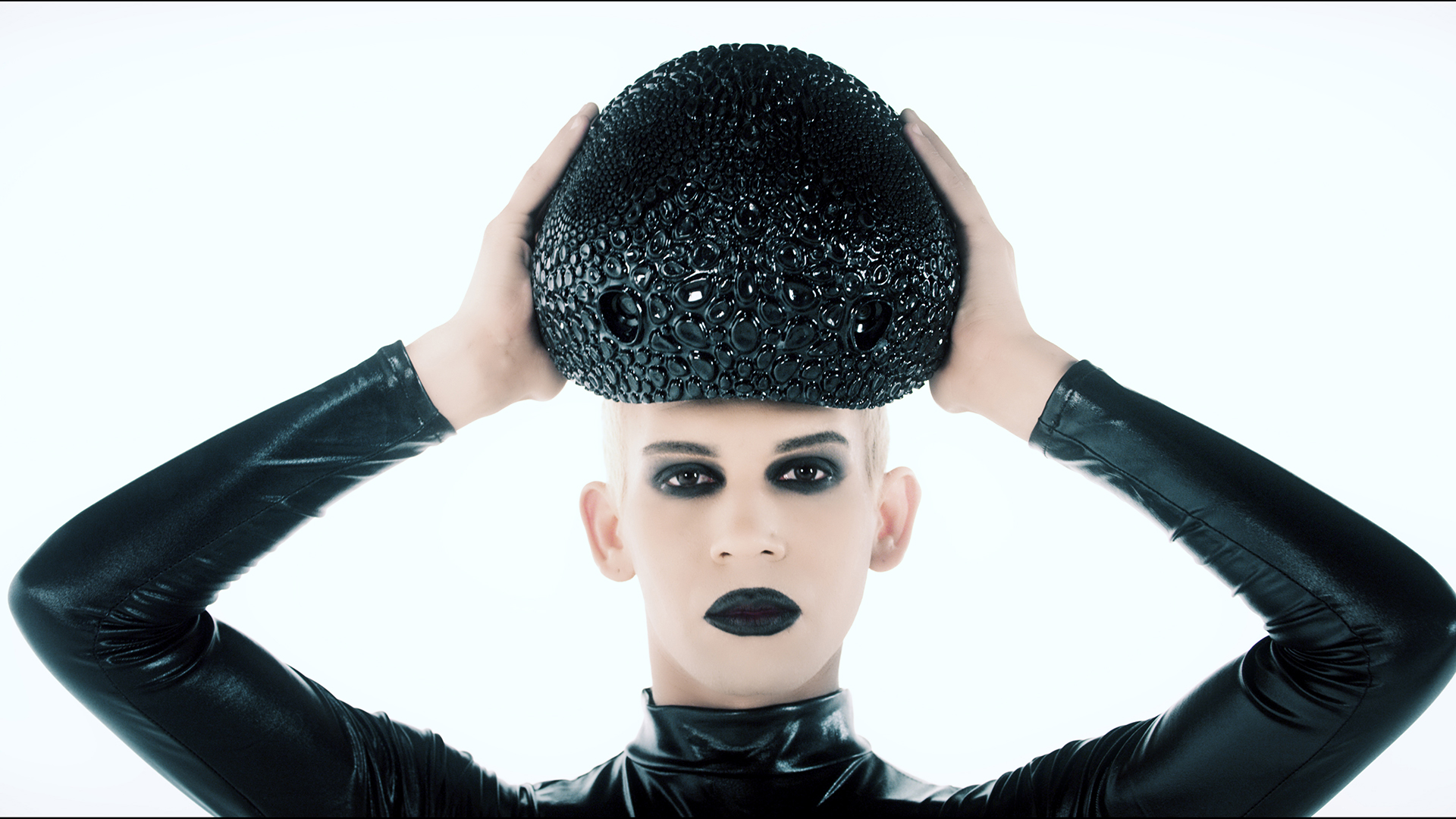
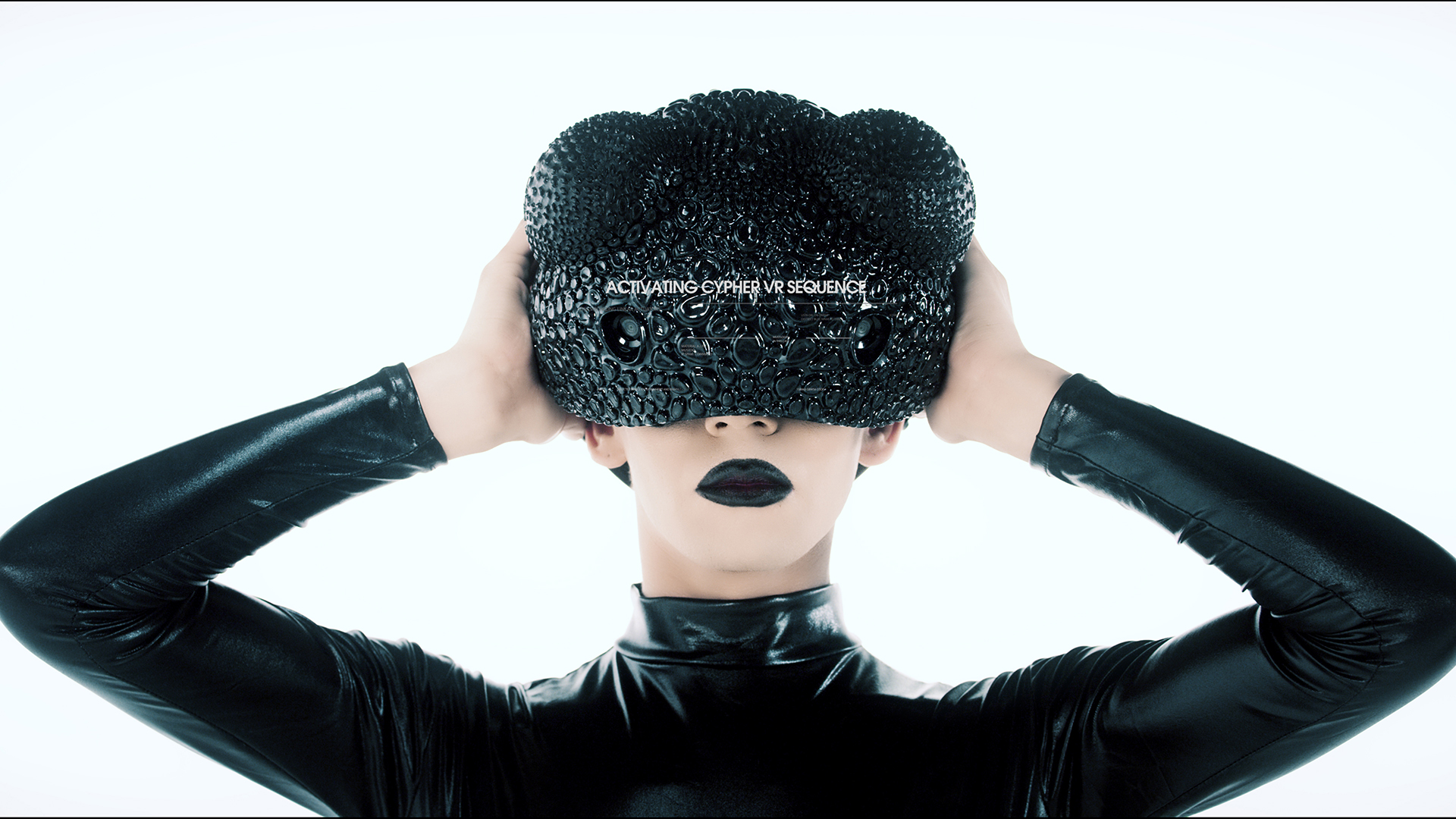


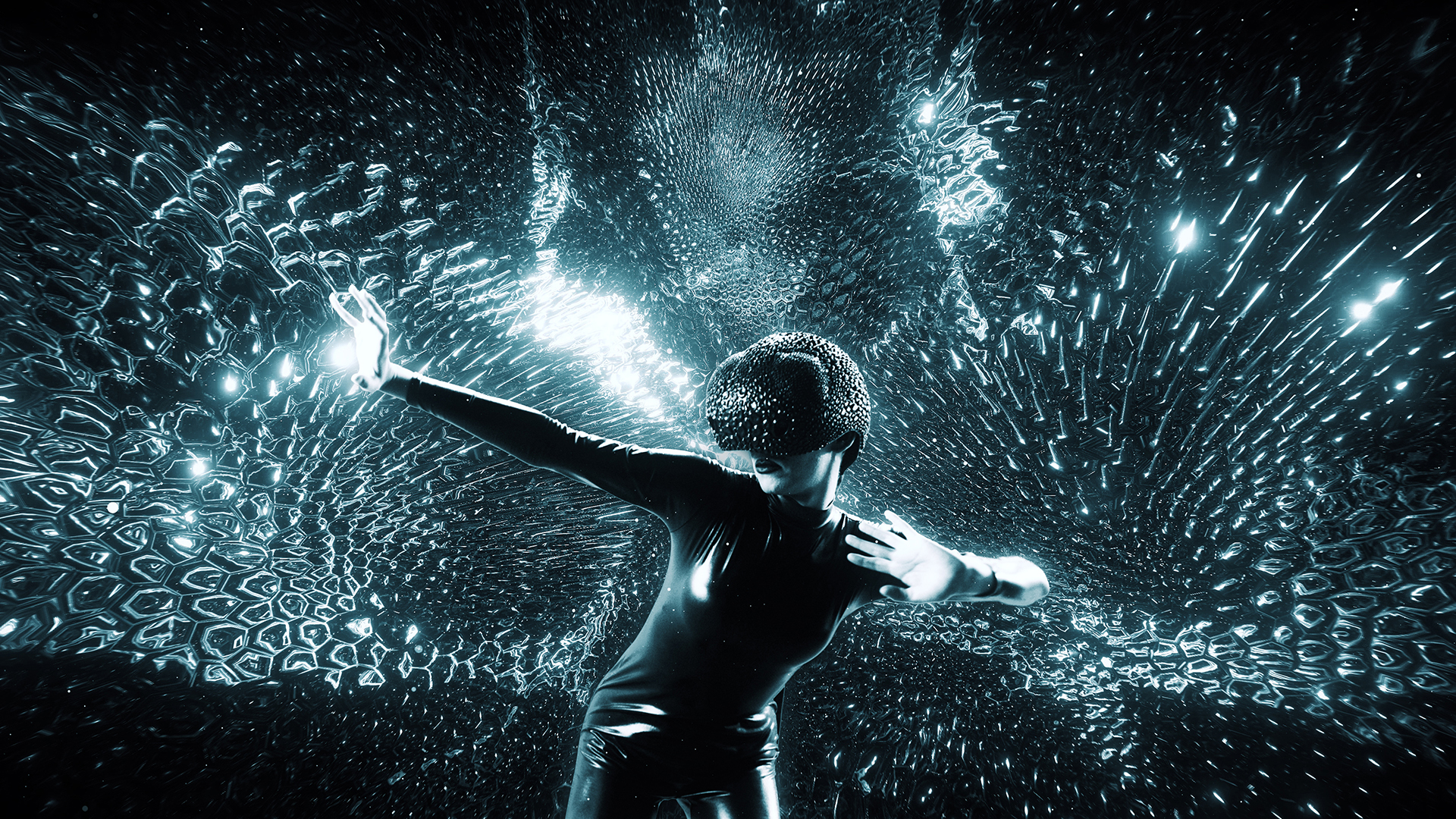
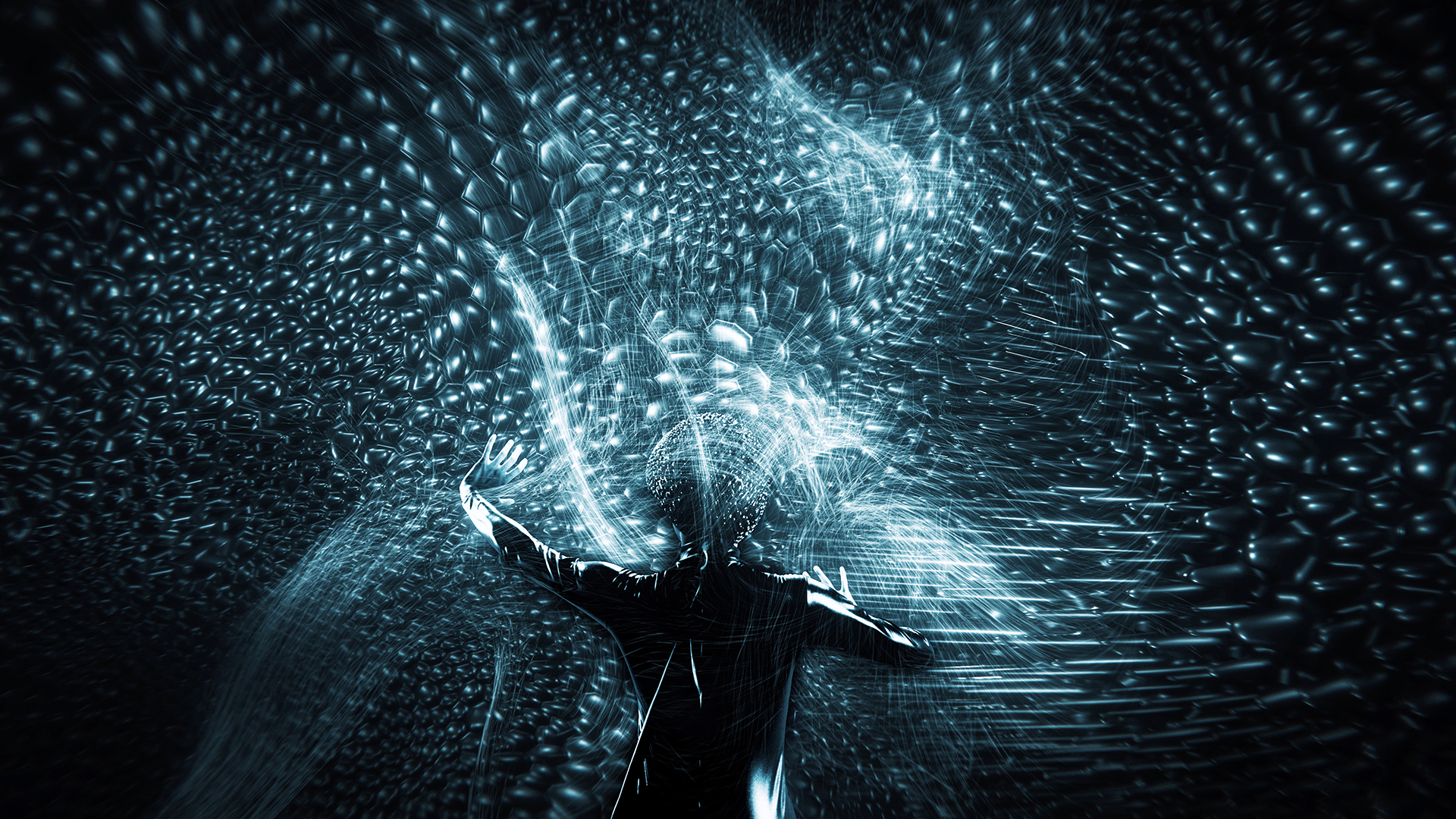
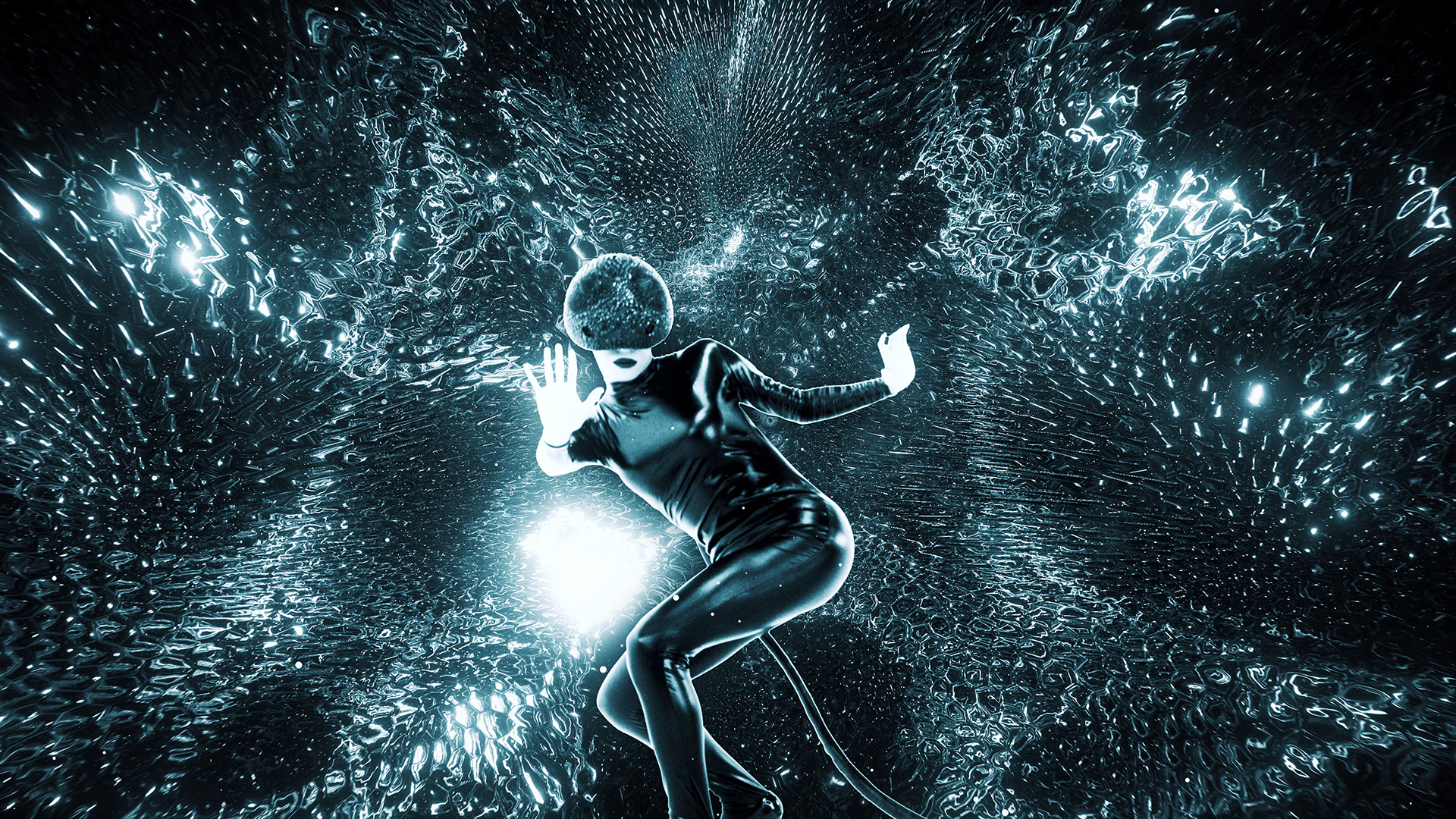
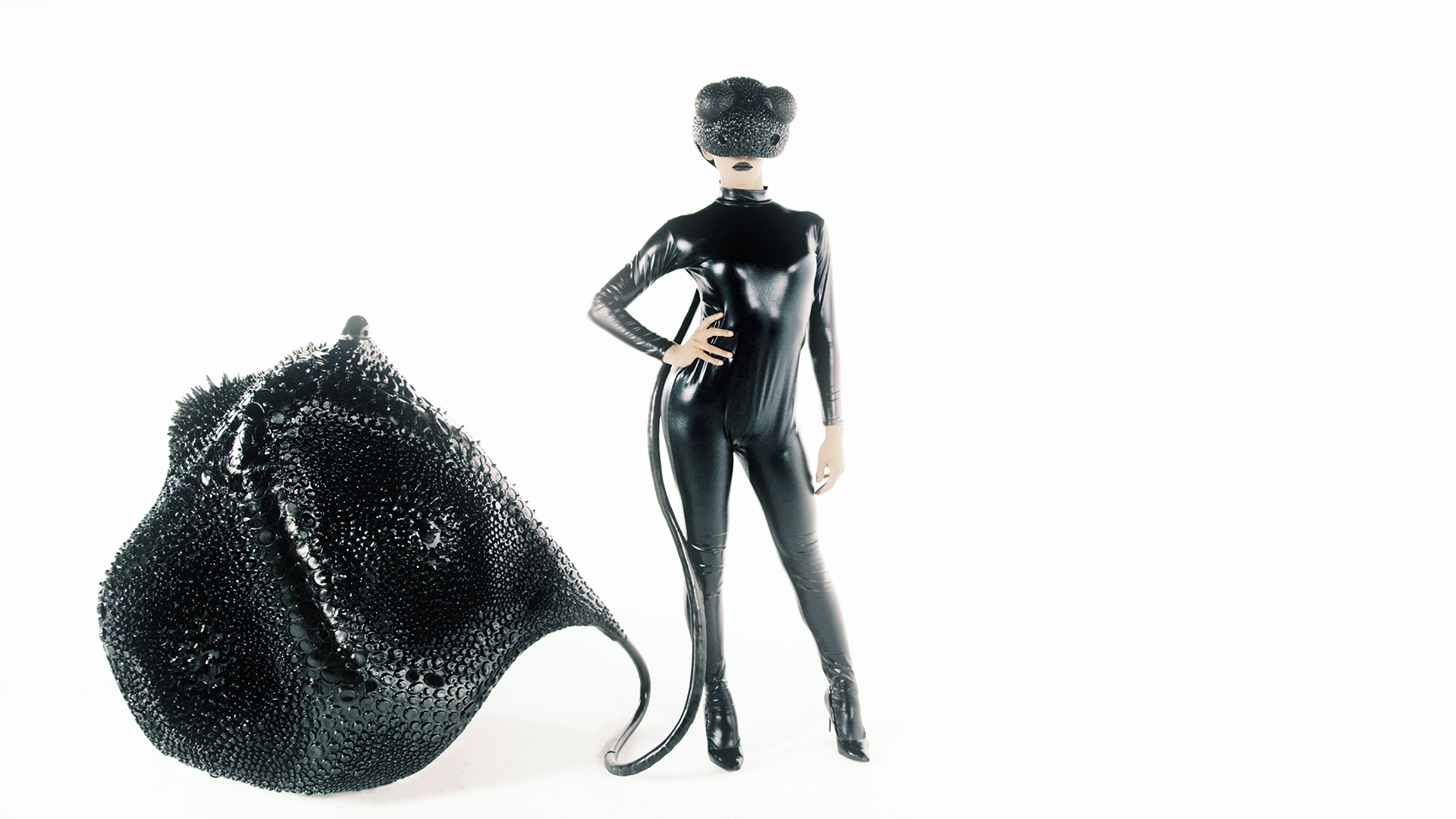
CYPHER
Year: 2018
Location: Digital
Team: Guvenc Ozel, Benjamin Ennemoser, Tyson Philipps
Cypher is a sculptural installation that creates an interactive experience through robotics, virtual reality, sensor interaction and machine learning. By combining an interactive soft robotic body with a virtual reality interface, Cypher establishes a bridge between the physical and digital worlds, collapsing them into the same experiential plane by synchronizing a virtual reality simulation with human-robot interaction.
Through an infrared sensor array and a LIDAR (similar to technologies in autonomous vehicles), the sculpture has an ability to detect the proximity of the audience and change its shape accordingly. The virtual reality headset tethered to the sculpture teleports the user to its interior, radically shifting the scale of experience from object to space. While in VR, the user has the ability to change the shape of the simulation through natural hand gestures. As the user changes the shape of the VR simulation, the robot moves real-time, aligning the physical and digital transformations. The relationship between VR and robotics is further negotiated through machine learning algorithms, allowing the sculpture to develop natural motions by learning to predict the way in which people are interacting with it. The AI component allows for the sculpture to get more “intelligent” the more it is exhibited, using the number of interactions it has with the audience to cumulatively shape its motion and behavior through time. Through the synthesis of these multiple technologies, the sculpture challenges the notions of what is real vs. virtual, allowing the viewer to travel between multitudes of realities simultaneously.
With this combination of multiple technological systems working seamlessly, Cypher exists simultaneously in the digital and the physical worlds. It has an ability to respond to changes in its environment both as simulation and as material. By merging the worlds of virtual reality and robotics, Cypher has an ability to translate concepts and experiences that are traditionally seen as opposite domains: architecture vs. sculpture, object vs. space, digital vs. physical, real vs. virtual, visual vs. tactile, machine vs. organism.
